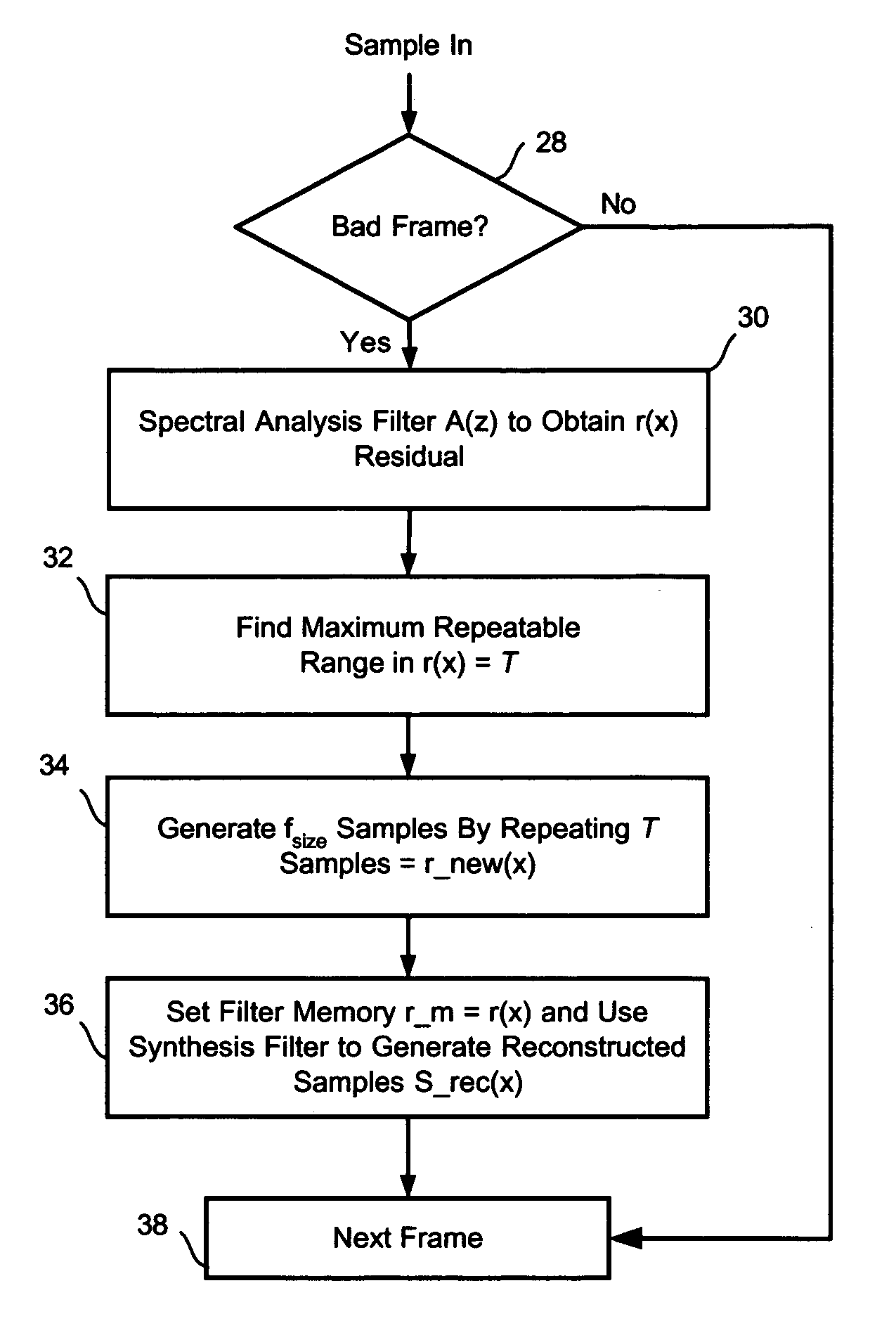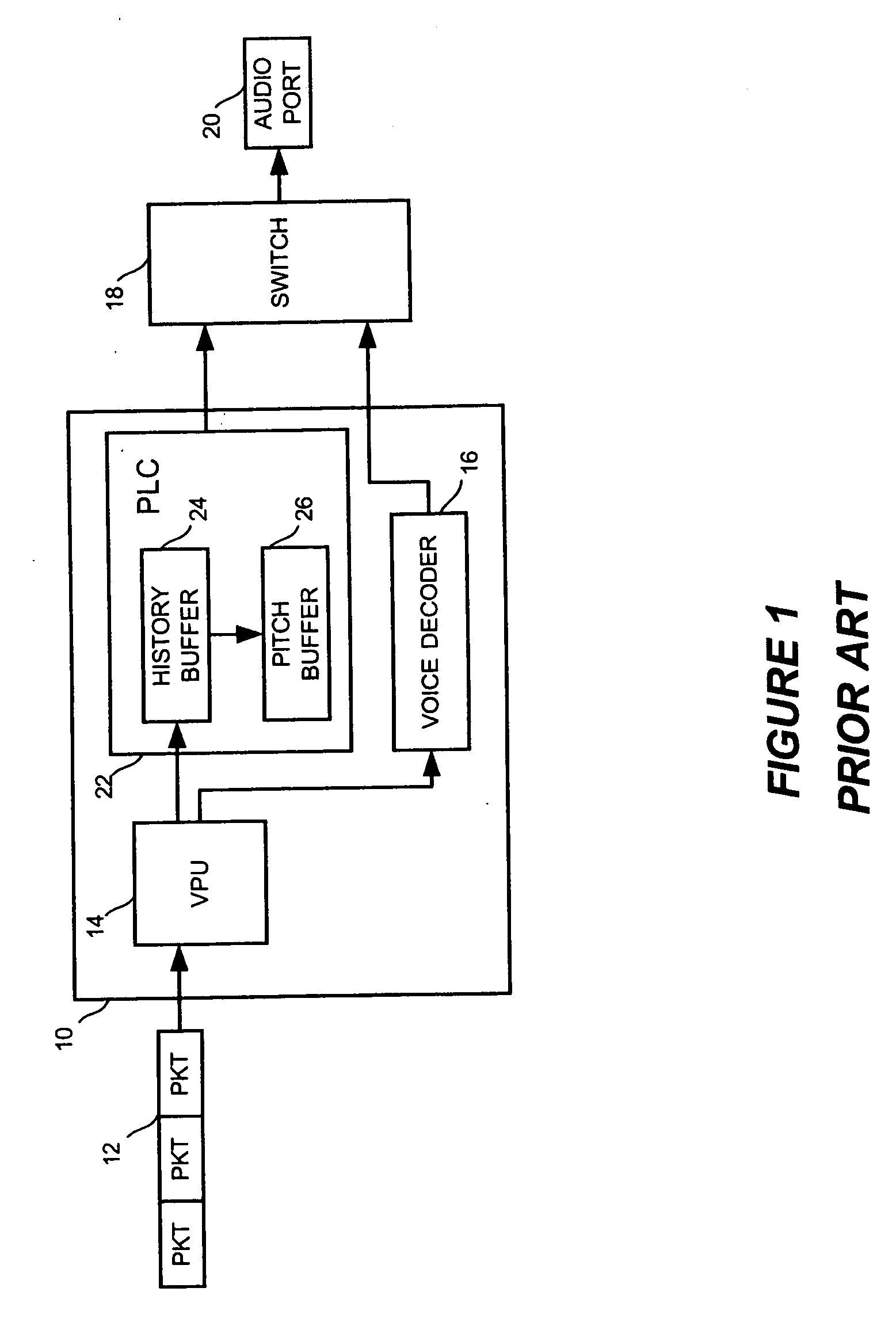Packet loss concealment for voice over packet networks
a packet network and packet technology, applied in data switching networks, multiplex communication, instruments, etc., can solve problems such as delay jitter, packets may arrive out of order, packets are delayed or misdirected from the primary data stream, etc., and achieve the effect of fewer processing resources
- Summary
- Abstract
- Description
- Claims
- Application Information
AI Technical Summary
Benefits of technology
Problems solved by technology
Method used
Image
Examples
Embodiment Construction
[0020] The present invention includes a method to reduce the memory and processing resources requirements for a packet loss concealment (PLC) algorithm. The method of the preferred embodiment is applied to an ITU G.711 PLC algorithm and is illustrated by the flowchart in FIG. 2. When a receiver 10 determines that a packet from the incoming packet stream is lost 28, the preferred algorithm analyzes 20 ms of samples that have been saved into the history buffer through a spectral analysis filter 30. A spectral analysis filter filters samples for parameters of audible speech that produce the inflections of sound encoded in voice data such as impulse and excitations. FIG. 4 illustrates a block diagram of a spectral analysis filter A(z) 42 that receives input samples 40. The spectral analysis filter A(z) 42 is a linear predictor with prediction coefficients, ai, that is defined as a system whose output is r(n)=∑i=0nais(n-i)
where r(n) is the sample index of the residual samples in ti...
PUM
 Login to View More
Login to View More Abstract
Description
Claims
Application Information
 Login to View More
Login to View More - R&D
- Intellectual Property
- Life Sciences
- Materials
- Tech Scout
- Unparalleled Data Quality
- Higher Quality Content
- 60% Fewer Hallucinations
Browse by: Latest US Patents, China's latest patents, Technical Efficacy Thesaurus, Application Domain, Technology Topic, Popular Technical Reports.
© 2025 PatSnap. All rights reserved.Legal|Privacy policy|Modern Slavery Act Transparency Statement|Sitemap|About US| Contact US: help@patsnap.com



